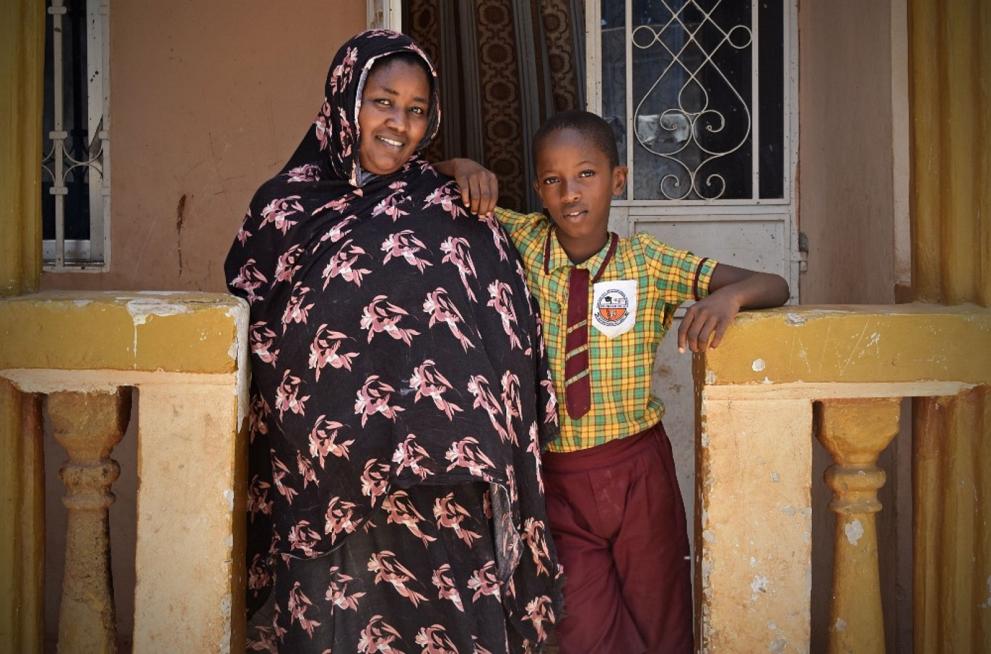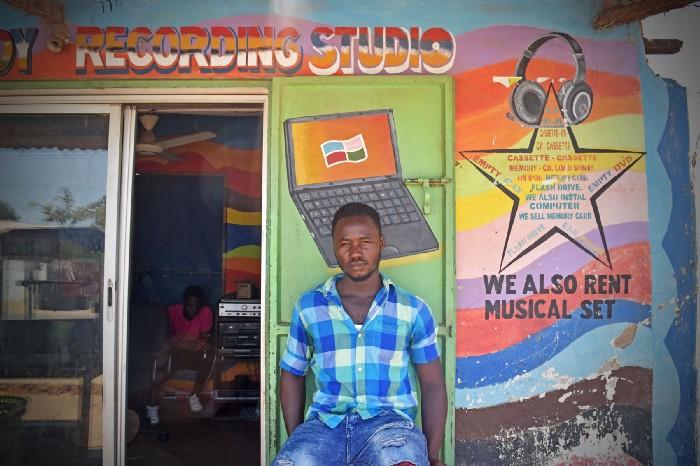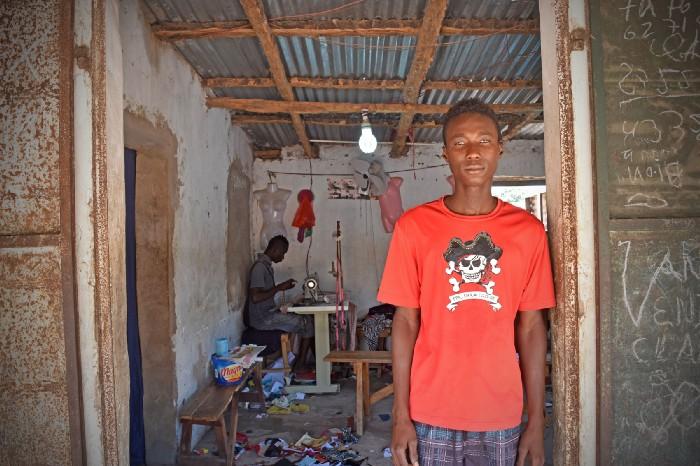
When Omar left The Gambia in 2016, he was only eight years old. His father had brought him on a long and arduous journey to Libya, with the aim of reaching Europe. Omar’s mother Mali, who was told that they were visiting relatives in Nigeria, was horrified to receive a call from Algeria. “This was when I found out they were trying to reach Italy. I was mad and confused,” recalls Mali. Little did she know that, at this time, her son had been walking in the Sahara Desert for days.
After intermittent communication over three months and failed attempts to convince them to return home, Mali’s phone rung one day in February 2017 — her husband had drowned crossing the Mediterranean Sea. Fortunately, Omar survived, although he was left unaccompanied and stranded in Libya.
Omar and his father’s story captures what is known in The Gambia as the backway phenomenon — a colloquial term used in the country to refer to irregular migration to Europe. In 2016, over 12,000 Gambians trying to reach Italy were rescued at sea. This number discounts thousands more whose journeys ended on the African continent or who perished in the Mediterranean. In 2016, over 180,000 people reached Italy through the Mediterranean Sea, many of whom were from West and Central Africa.
Beneath the common narrative of the ‘young, working age man’ seeking greener pastures in Europe, are stories of children forever impacted by their experiences on the backway. Since 2017, 68 minors were among over 4,000 Gambians assisted by the International Organization for Migration (IOM) to voluntarily return home, 22 of whom returned as unaccompanied and separated children. While some return with a parent or guardian, others are not so fortunate.
“Why?” is a question Mali asks up to this day. “My husband was a barber before he left. We were not living well, but we managed. He would always tell the boys in our community that the dangerous journey was not worth it,” she shares with a tone of confusion. “I know he just wanted more for us.”
While many children journeyed along the backway with family hoping to start anew thanks to the money earned in Europe, many other children, short of turning eighteen, embarked on the journey on their own accord. Kevin made this decision at the age of 15.
Having grown up in Sierra Leone, he returned to The Gambia, his country of birth, to join his uncle when both his parents passed away. “The environment was new and strange to me. I didn’t know what I was thinking. I just wanted to get out of here,” recollects Kevin, who left to meet a friend in Algeria, both trying to reach Spain through Morocco.
While Kevin resorted to the backway due to the lack of friends advising him against it, Ousman tackled the same journey at 16 for the opposite reason. “A few friends and I had been thinking of leaving, and we already had friends who had made it to Italy,” he says of his rationale at the time — highlighting the notable role peer pressure plays in migratory decisions. “Many boys my age often talk about the backway without telling their parents.”
Ousman’s father Momodou was blind to his son’s contemplation. “One day, he just didn’t come home from playing basketball. I asked his friends, who told me he had taken the backway. I said, ‘the backway? At his age?’”
Whether eight years of age or sixteen, one thing is for certain — irregular migration from West Africa to Europe is no journey for a child. “In many parts of the journey, bandits will suddenly attack you,” explains Kevin. “In various destinations we are forced to stop and work, to earn more money to continue along the journey. Yet many times, you simply don’t get paid.”
These difficulties happen before even reaching Libya, where stories of migrants being tortured and abused are rife. Omar narrowly escaped death — a camp he was staying in with fellow Gambians was attacked by rebels just a day after he was taken by social welfare authorities to Tripoli for his flight back home.
These stories are common for all those who took the Backway. In response to this phenomenon, the African states, the European Union and the International Organization for Migration (IOM) launched in 2016 the EU-IOM Joint Initiative for Migrant Protection and Reintegration. Covering 26 African countries, the Joint Initiative is the first comprehensive programme to save lives, protect and assist migrants along key migration routes in Africa. The project supports the reintegration process of returning migrants through an integrated approach, which addresses economic, social, and psychological dimensions and fosters the inclusion of communities in the process.
For unaccompanied children like Omar, Kevin and Ousman, IOM conducts a family tracing procedure to confirm the individual’s age, identity and rightful guardian prior to assist with the voluntary return. Upon arrival in The Gambia, they are provided essential supplies and reunited with their family as soon as possible.
Due to the unique vulnerability of child returnees, IOM sets an appointment with them and their guardian within one week after their arrival. “We counsel them on possible options for reintegration support and refer them to the medical and psychosocial support colleagues if needed,” explains Pierre Jatta, IOM Reintegration Assistant in The Gambia, who works to facilitate the return and reintegration of child returnees. In terms of reintegration support, the priority is to support the child’s education.
Nevertheless, many children can return home to families facing significant economic loss. In order to support Ousman along his journey, his father took loans amounting to over 50,000 Gambian Dalasi (approximately USD 1,000). Mali shares that her husband, unbeknownst to her, sold his barber shop and car prior to leaving. Reintegration assistance can therefore consist of supporting a family business.
Certainly, reintegration needs of child returnees are not just in the economic sphere — to be sustainable, the social and psychosocial components have to be taken into account. “Until today, I still find sometimes Omar crying in front of his father’s portrait,” laments Mali. “Ousman would barely leave the house in his first three months back,” echoes Momodou.
Conversely, when asked how he felt when he returned, Ousman said he was fine, pointing to a still existing level of reluctance among child returnees to share their feelings. “Many of them are not open to talking at first. It takes time and several sessions,” says Tida Joof, IOM Reintegration Assistant also working to assist child returnees.
As children continue to suffer along the backway, Omar, Kevin and Ousman are fortunate to be back home and safe. Kevin received support to expand his uncle’s electronics business, under which he rents, sells and repairs gadgets.
Meanwhile, Ousman received support to continue his studies, though he has since stopped. “I didn’t enjoy it, and I wanted to become a tailor,” he explains. Now working at a tailoring shop, Ousman’s parents hope he will soon pursue technical and vocational training to enhance his skills.
Now 11 years old, Omar is back in school, cheerful and happy playing football with his friends, like many boys his age. “I know Omar will never forget what he went through with his father,” says Mali. Indeed, when asked what he wanted to be when he grew up, Omar responds immediately — “I want to be a barber, just like my father.”
Details
- Publication date
- 23 August 2019
- Region and Country
- The Gambia
- Thematic
- Greater economic and employment opportunities
- Partner
- International Organization for Migration
- ITC - International Trade Center


